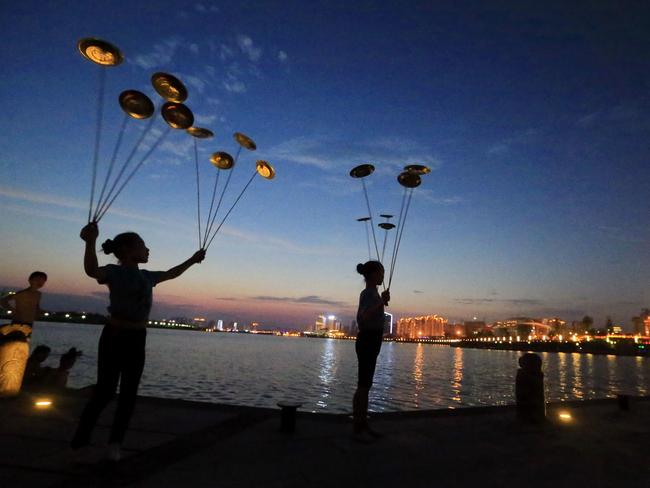China’s Belt and Road Initiative could redraw the map on global trade
IT’S a $1 trillion plan that could redraw the map and mark a global tipping point. Here’s what you need to know about the game-changer.
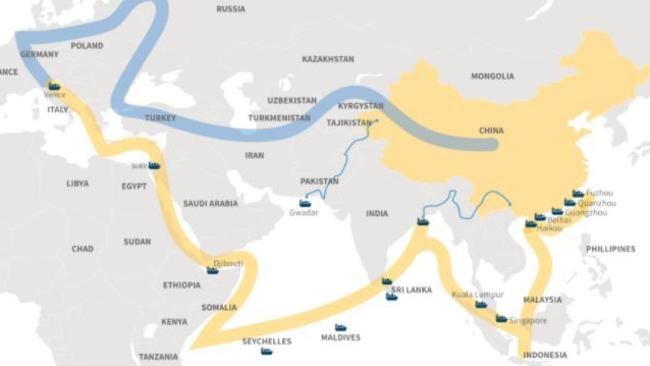
IT’S a $1 trillion project that could redefine global trade and mark a tipping point for a new Asian century.
But despite the huge ambition and vast scale, relatively little is known about how China’s grand plan might work in practice.
With Aussie companies being told to get in on the action before it’s too late, here’s what you need to know about the global project that could redraw the map.
CHINA’S BELT AND ROAD INITIATIVE
China is working to develop a vast network of railways and ports dubbed the “Belt and Road Initiative” (BRI). That includes the “Silk Road Economic Belt” over land and the “21st Century Maritime Silk Road” which is a series of ports and railways.
Combined, the plan will include more than 60 countries and 4.4 billion people, passing through Asia, Europe, Africa and the Middle East, covering up to 40 per cent of global GDP.
It’s expected to cost at least $900 billion, with estimates up to three times that. China has already pledged more than $100 billion and it will be completed in a series of bilateral projects — such as the $46 billion China-Pakistan economic corridor, or a $5.2 billion railway that will eventually link Laos, Thailand, Malaysia and Singapore.
The Chinese Embassy said the “overall vision” is to build a “road of peace, prosperity, opening up, innovation and civilization” that is open for collaboration with other countries. It’s inspired by the ancient Sik Road, it said and over the next five years, China will spend up to $1 trillion in participating countries.
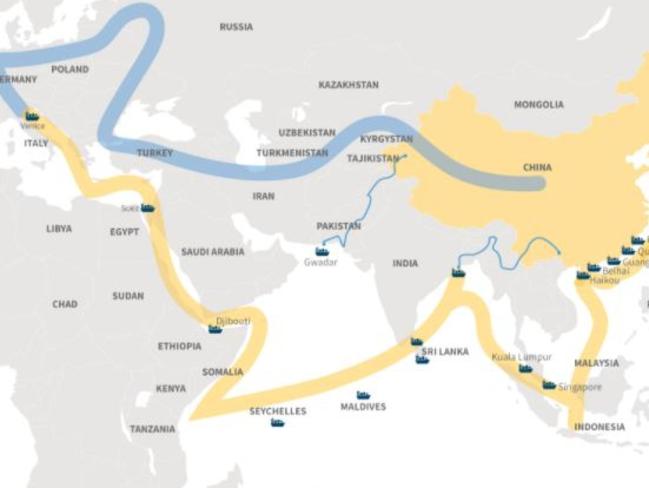
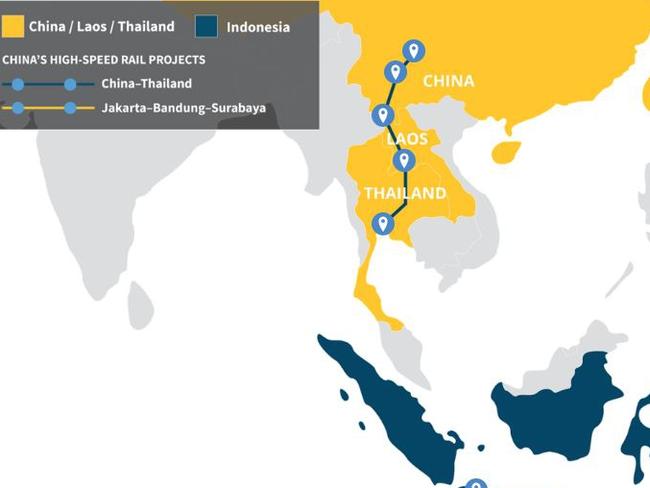
THE TIPPING POINT?
The enormous venture has been called the “biggest story” in Asian business that could redefine global trade. Combined with US President Trump’s decision to pull out of the trans-Pacific Partnership, some suggest it could signal the start of China becoming the leader on globalised exports.
SOAS China Institute expert Dr Yuka Kobayashi said while Chinese President Xi Jinping’s 2013 speech on the plan has seen it hyped as a “new strategy”, it’s actually a “continuation” of an old idea to assert Chinese political and economic power.
“The initiative is a complex one,” she told news.com.au. “It encompasses areas of security and economics and is also China’s challenge to US hegemony. It’s part and parcel of China trying to assert itself as a rising power and having this influence in power politics commensurate with their status.”
She said the focus on economic is also part of China “trying to present itself in a palatable way” to others. “It’s presented as a win-win initiative, with fuzzy Confucian ideals so that is not perceived as threatening for these border regions.”
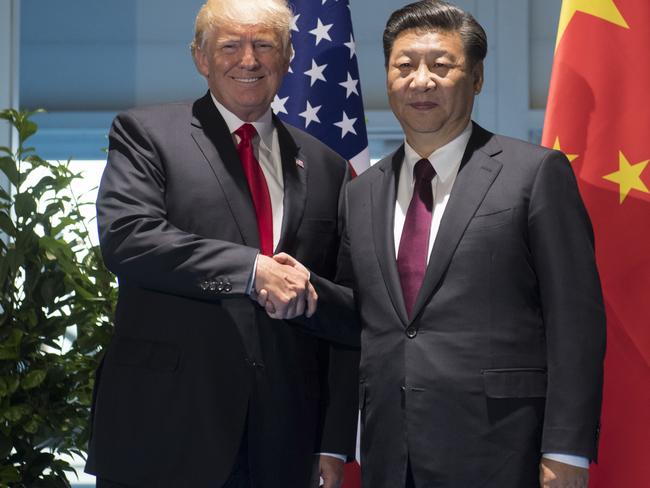
‘ONE BELT ONE TRAP’
China has touted the project as a way of connecting and developing some of the most diverse countries in the world, providing economic opportunities to left-behind regions. However it’s also widely seen as a way of creating markets for Chinese goods which helps solve the problem of overcapacity for China. Meanwhile strategic and geopolitical overtones reinforce its dominance in the region.
Dr Kobayashi said the response from countries has been “mixed” depending on how much they need the investment.
“Not being perceived as a ‘threat’ is something that the Chinese are very conscious about so they’re really trying to package it that way, saying ‘we’re investing in infrastructure’ giving you the financing and helping with construction. It’s hard to say ‘no’ to that,” she said.
Others have been less diplomatic. China expert Tom Miller told the BBC parts of it could be described as a “giant bribe” in which China promises investment in exchange for political concessions. He also raised the prospect of poor countries like Laos being stripped of their natural resources in exchange for $7 billion in railway investment, for example.
“How is Laos going to pay this back? In practice it’s going to pay it back with natural resources,” he said. “This railway could metaphorically become a conveyor belt for exporting valuable natural resources out of the country to China.”
India has also raised fears China’s military ports — dubbed a “string of pearls” — could “prove costly for India at the time of conflict with China”.
China maintains that it is full of “peace loving people” and their growth is a “contribution to world peace and prosperity,” a spokeswoman for the Chinese embassy said.
“With a population of more than 1.3 billion, China is still the biggest developing country in the world seeking to balance the level of development within the country.”
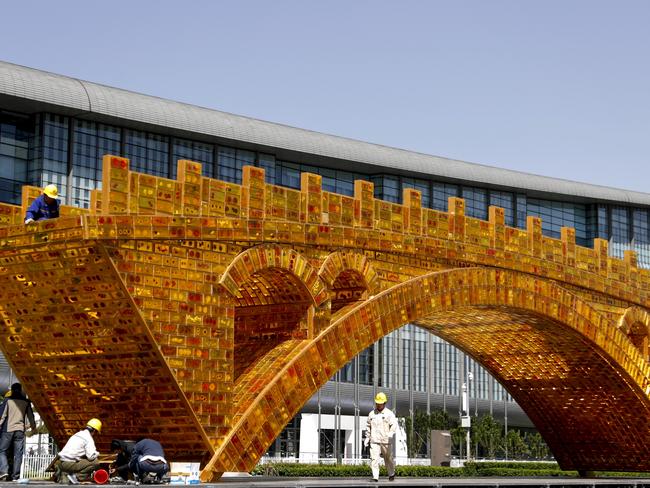
WHAT ABOUT US?
What the project will mean for Australia remains to be seen, with local companies currently encouraged to explore how they might be able to get on board.
A working group between the two countries has been established, with expert Jean Dong saying in May that Aussie companies need to stop being a “bit arrogant and domestically focused” in order to get a piece of the “hot market” in China.
The Chinese embassy said Australia is an “important trade partner” and they want to deepen the relationship “based on mutual respect and mutual benefit.”
“China and Australia should enhance mutual political trust, promote all-round practical cooperation for the welfare of the people of both countries.”
The project is already being praised in Serbia where China has loaned the country $8 billion to build bridges, highways and roads to bring goods into Europe. Earlier this year, Hungarian Prime Minister Viktor Orban also said the “old model for globalisation has become obsolete” and the East was the new “engine room” for global growth.
Despite the enthusiasm, Dr Kobayashi said it’s important to question how “realistic” and “economically viable” the plan is, given the potential for “sensationalist” figures.
“It’s a good niche on financing in infrastructure they’ve focused on and they have presented this in a palatable manner. However in terms of the scale of the initiative there are doubts about how realistic it is,
“Also on the win-win the Chinese emphasise, there are doubts. Is it really win-win for trains to take manufactured products from China to Madrid and go back empty?”
